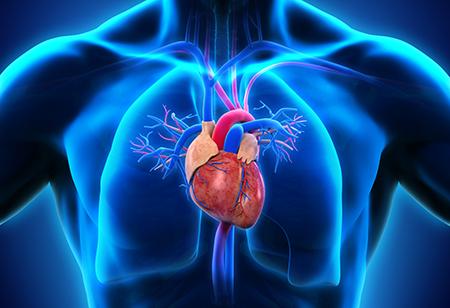After returning to Phoenix, he was admitted to HonorHealth John C. Lincoln Medical Center.
"I weighed nearly 450 pounds," he says. "30 pounds of it were fluid. Furosemide helped me lose those 30 pounds in three to five days."
Anselmo Garcia, MD, a pulmonologist who is an independent member of the HonorHealth medical staff, visited him in his hospital room. The physician quickly recognized that Chris couldn't even lie in bed comfortably. Something was seriously wrong.
"He told me: 'We need to change things, or we need to make you comfortable, so that you can check out (of life),'" Chris remembers. "But I love life! I'm going to ride the wave and listen to the doctors. I'm going to battle to a different outcome."
A diagnosis: High blood pressure in arteries
Preliminary tests pointed to pulmonary arterial hypertension, also known as PAH. Simply put, it's high blood pressure in the lung arteries. The small arteries in Chris's lungs had become narrow or blocked, forcing his heart to work very hard to pump blood through them. PAH can lead to heart failure in the right side of the heart.
The pulmonologist conferred with Therese Sargent, a nurse practitioner who runs the HonorHealth Pulmonary Hypertension Program on the HonorHealth John C. Lincoln campus. She specializes in PAH by diagnosing and treating this rare condition, ensuring that the appropriate tests are performed to confirm a PAH diagnosis and that, once confirmed, treatment begins and is closely monitored.
After 14 days in the hospital, Chris went home. He returned within a week for an outpatient right-heart catheterization that confirmed a PAH diagnosis.
"It showed pulmonary arterial hypertension that was causing severe debilitation," Therese says. "Now we knew exactly what we were dealing with."
Why does Chris have this serious disease at such a young age? It might be genetic. His maternal grandmother died in the '90s waiting for a heart/lung transplant. Many of their symptoms appear to be similar. PAH genetic testing is available through the HonorHealth Pulmonary Hypertension Program.
Pulmonary arterial hypertension treatment makes a 'big difference'
Once diagnosed, Chris started taking two medications, riociguat and macitentan, and began to improve.
"My feet had looked bluish, but with treatment, they got warm and were coming back to their normal color. Blood was reaching places it had not been able to reach before. I could walk farther. When I started taking both medications, I noticed a big difference," Chris says.
But he wasn't out of the woods yet. Two months after his diagnosis, an ambulance rushed him back to John C. Lincoln Medical Center.
"I had two blood clots in my lungs. Therese evaluated me and made the CTEPH diagnosis: chronic thromboembolic pulmonary hypertension," Chris says. Next came a prescription for a blood thinner to dissolve the blood clots and prevent future ones. "Since then, I feel better," Chris says. "With the medicines I'm on, I have more energy. I can travel again and go to concerts. I've lost a lot of weight — about 100 pounds. I'm working hard to lose more."
"Dr. Garcia and Therese have been an amazing team for me," he continues. "They saw me as a person, not as an illness. That's what I needed. I am not my disease! I'm back to doing what I love now, traveling and glamping. On a scale of one to 10, I'm at an eight right now."
In 2018, he returned to Denver on vacation, "and everything went great." He hopes to eventually use a degree he earned at Arizona State University in 2015, a bachelor's degree in liberal studies.
"I want to go into human resources and train employees," he says.
Therese noted that there is no cure for PAH, but a recent right heart catheterization showed improvement in Chris's condition.
"He went from severe to moderate pulmonary hypertension within a year of the diagnosis," she says.
"With early detection and early treatment, we can extend a patient's life and their quality of life. That's why we created HonorHealth's Pulmonary Hypertension Program on the John C. Lincoln Medical Center campus," she says. "In Chris's case, he had been seen by pulmonologist before Dr. Garcia saw him, and by a cardiologist, but they missed the possibility that he had PAH."
